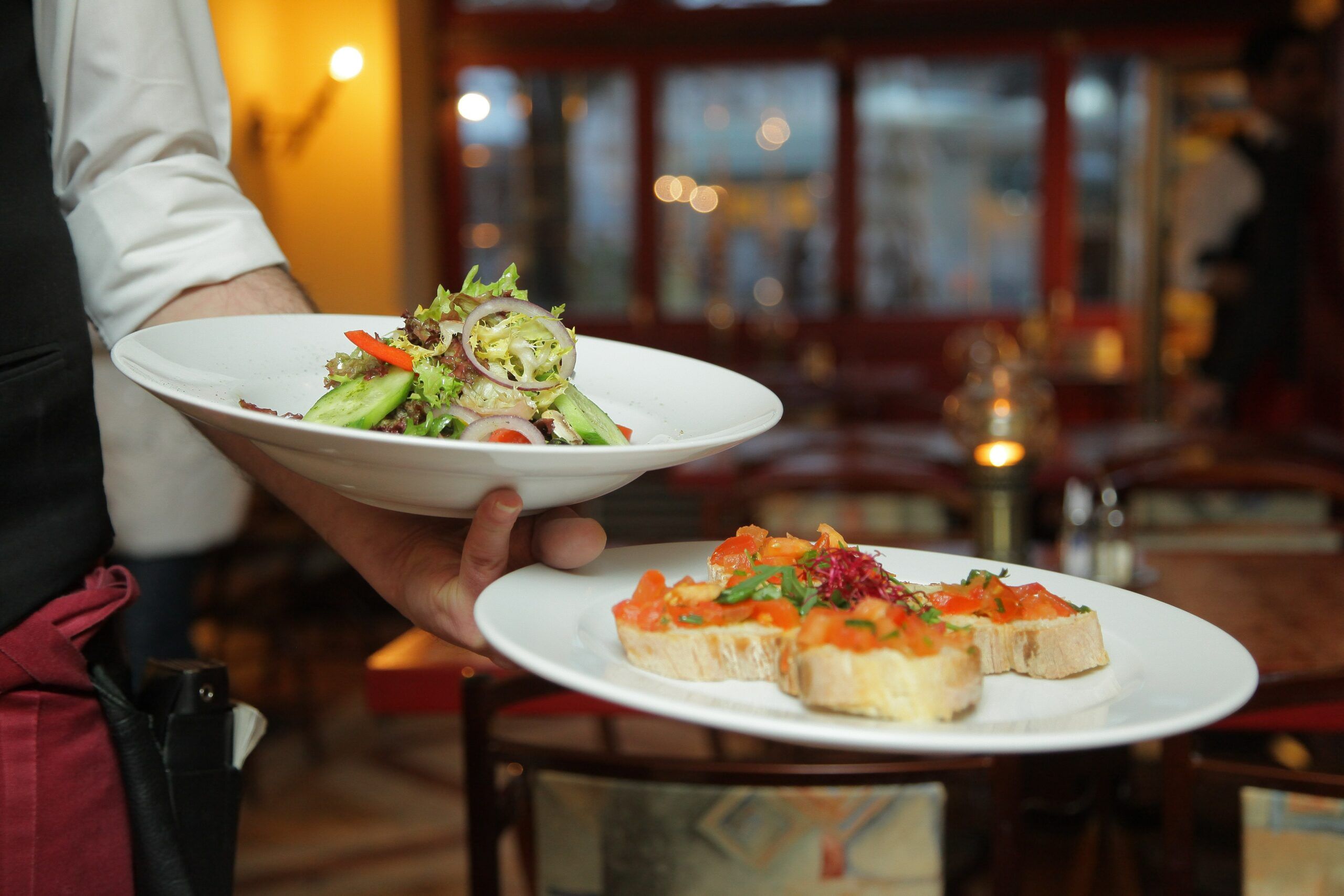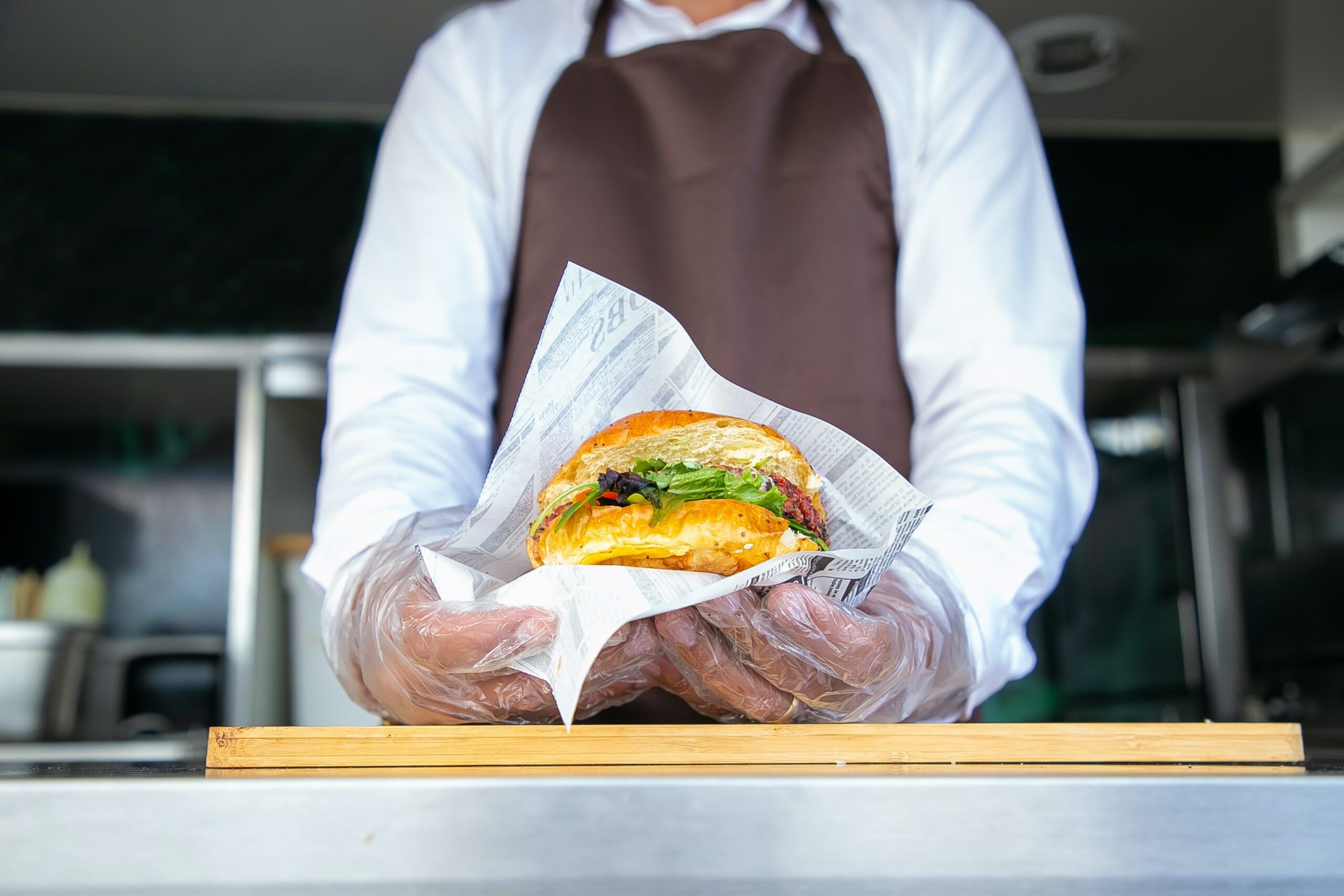- Why Using the Latest Marketing Materials is Crucial for a Restaurant?
- What Are Some Main Examples of Restaurant Marketing Materials?
- Embrace Restaurant Marketing Materials and Increase Your Exposure
You might have a signature dish that no one in your area provides or an interior design that’s so appealing to Gen Z.
But are you using effective marketing strategies for your restaurant’s brand?
In an age where engagement matters to customers, navigating the marketing arena can be challenging if you’re not equipped with the right tools and materials.
So, in this guide, we’ll equip you with the marketing materials as a part of your overall restaurant marketing strategy to reach more customers and build a more robust brand for your restaurant.
Why Using the Latest Marketing Materials is Crucial for a Restaurant?
The importance of using the latest marketing materials in your restaurant marketing strategies cannot be overstated in the ever-evolving landscape of the culinary world.
And Because First Impressions Matter,
Using the latest marketing materials is crucial for a restaurant for several reasons, as it helps to stay competitive and effectively reach and engage with customers.
Here are some key reasons:
Stay Relevant and Fresh:
Utilizing the latest marketing materials allows a restaurant to stay current and aligned with contemporary design trends and consumer preferences.
Keeping promotional materials fresh and up-to-date ensures the restaurant’s image remains relevant and appealing to the target audience.
Highlight Specials and Seasonal Offerings:
Restaurants often have seasonal menus, promotions, or special events. Regularly updating marketing materials enables the promotion of these offerings effectively.
It helps in creating a sense of urgency, encouraging customers to try new dishes or visit the restaurant for limited-time events.
Adapt to Trends and Consumer Behavior:
Consumer preferences and behavior change over time. By using the latest marketing materials, restaurant owners can demonstrate that they understand and adapt to these shifts.
This adaptability can be reflected in the design, messaging, and channels chosen for marketing, ensuring that the restaurant stays in tune with what appeals to its audience.
Don’t forget to check the site of the National Restaurant Association for up-to-date research and trends!
Enhance Brand Perception:
Consistently updating marketing materials contributes to a positive brand perception. It shows that the restaurant invests time and effort into presenting itself in the best possible way.
A well-maintained and updated image can enhance the perceived quality of the food, service, and overall dining experience.
Utilize Technology and Social Media:
Embracing the latest marketing materials often involves leveraging technology and social media platforms. This is crucial for reaching a wider audience, especially younger demographics.
Engaging with customers through visually appealing and shareable content on platforms like Instagram, Facebook, or TikTok can significantly boost visibility.
Compete Effectively:
In a competitive market, restaurants need to strive to differentiate themselves continually. Using the latest marketing materials can be critical in standing out from your competition.
Eye-catching visuals, well-designed menus, and professional promotional materials being part of your offline marketing can attract customers and make a positive impression.
Communicate Changes and Updates:
Marketing materials serve as a communication channel for conveying important information, such as changes in operating hours, new safety protocols, or updated services.
Keeping customers informed through updated materials fosters transparency and helps build trust.
Encourage Customer Engagement:
Interactive and visually appealing materials encourage customer engagement. This could include a loyalty program, interactive menus, visually enticing images, or user-generated content campaigns.
Engaged customers are more likely to share their experiences and become brand advocates, contributing to word-of-mouth marketing.
What Are Some Main Examples of Restaurant Marketing Materials?
The latest restaurant marketing materials often leverage a combination of traditional and digital mediums to reach a diverse audience. Here are some main examples of restaurant marketing materials:
Dynamic Website
A modern, user-friendly website is a crucial marketing tool. It should feature an appealing design, easy navigation, and up-to-date information on menus, specials, and events.
Social Media Content
Platforms like Instagram, Facebook, and TikTok are powerful for showcasing visually appealing content. This includes high-quality images of dishes, behind-the-scenes glimpses, and engaging video content.
Online Menu
An online marketing strategy should always take into account your menu. Ensure that online menus are not only easy to find on the restaurant website but also optimized for mobile viewing. Interactive menus with appealing visuals and detailed descriptions enhance the customer’s experience.
Email Marketing Campaigns
Targeted email campaigns can include promotions, special offers, and updates. Personalized emails based on customer preferences can enhance engagement.
Digital Advertising
Utilize paid digital advertising on platforms like Google Ads or social media to reach a broader audience. Targeted ads can promote new menu items, events, or discounts.
Your Inbox, Your Rules!
Tailor your newsletter with the topics you're most interested in.
Interactive QR Codes
QR codes on menus or promotional materials can lead customers to interactive content, such as videos showcasing the cooking process, chef interviews, or online feedback forms.
Augmented Reality (AR) Menus
Implementing AR technology in menus can provide an interactive and immersive dining experience. Customers can view 3D images of dishes or get additional information through their smartphones.
Influencer Collaborations
Partnering with influencers in the food and lifestyle niche can help expand the restaurant’s reach. Influencers can create engaging content, share their dining experiences, and promote the restaurant to their followers.
Geo-Targeted Ads
Use location-based targeting in advertising to reach potential customers in the local community. This is particularly effective for promoting daily specials or events to a local audience.
Online Reviews and Testimonials
Actively manage online reviews on platforms like Yelp, TripAdvisor, or Google My Business. Positive reviews and testimonials can be highlighted on the restaurant’s website and social media.
Branded Mobile Apps
Develop a mobile app for the restaurant business that allows customers to place orders, make reservations, and receive exclusive offers. Push notifications can be used to keep customers informed about promotions.
Podcast Sponsorships
Partner with food or lifestyle podcasts for sponsorships. This can help the restaurant reach a niche audience interested in culinary experiences.
Sustainable Packaging and Messaging
Incorporate environmentally friendly packaging and highlight sustainability efforts in marketing materials. Consumers increasingly appreciate businesses that prioritize eco-friendly practices. When making decisions regarding sustainability, be sure to check your marketing budget so as not to overstep your spending.
Virtual Events and Webinars
Host virtual events or webinars showcasing cooking classes, chef interviews, or discussions about food trends. Promote these events through online channels.
User-Generated Content Campaigns
Encourage customers to share their dining experiences through photos and reviews. Feature user-generated content on the restaurant’s social media, creating a sense of community.
Collaborative Promotions
Collaborate with local businesses or influencers for joint promotions. This can involve cross-promotions, shared events, or joint discounts to attract a broader audience.
Visual Storytelling
Use visual storytelling techniques to narrate the restaurant’s journey, introduce the chef and staff, and share the story behind signature dishes. This can be done through a combination of images and text.
Contactless and Digital Menus
Embrace contactless dining by offering digital menus accessible through QR codes. This enhances safety and convenience for customers.
Create custom augmented reality filters and lenses for social media platforms. Customers can engage with these filters, adding a playful and shareable element to the restaurant’s marketing.
Online Reservation Platforms
Optimize the use of online reservation platforms, ensuring that they are integrated with the restaurant’s website and social media. This makes it easy for customers to book tables.
Embrace Restaurant Marketing Materials and Increase Your Exposure
The landscape of restaurant marketing has evolved significantly, incorporating a dynamic mix of traditional and digital materials to capture the attention of today’s diverse and tech-savvy audience.
Staying ahead in this competitive industry requires a strategic approach that embraces the latest marketing materials.
Digital advertising, email campaigns, and user-generated content play pivotal roles in reaching a wider audience, while sustainability efforts and contactless dining options cater to changing consumer expectations.
Moreover, navigating the diverse realm of modern restaurant marketing is made more accessible with platforms like Orders.co, which offers essential resources to kickstart your marketing endeavors.
Through innovative solutions such as QR cards and other print marketing materials, Orders.co empowers restaurants to seamlessly integrate technology into their operations, enhancing both customer engagement and operational efficiency.



